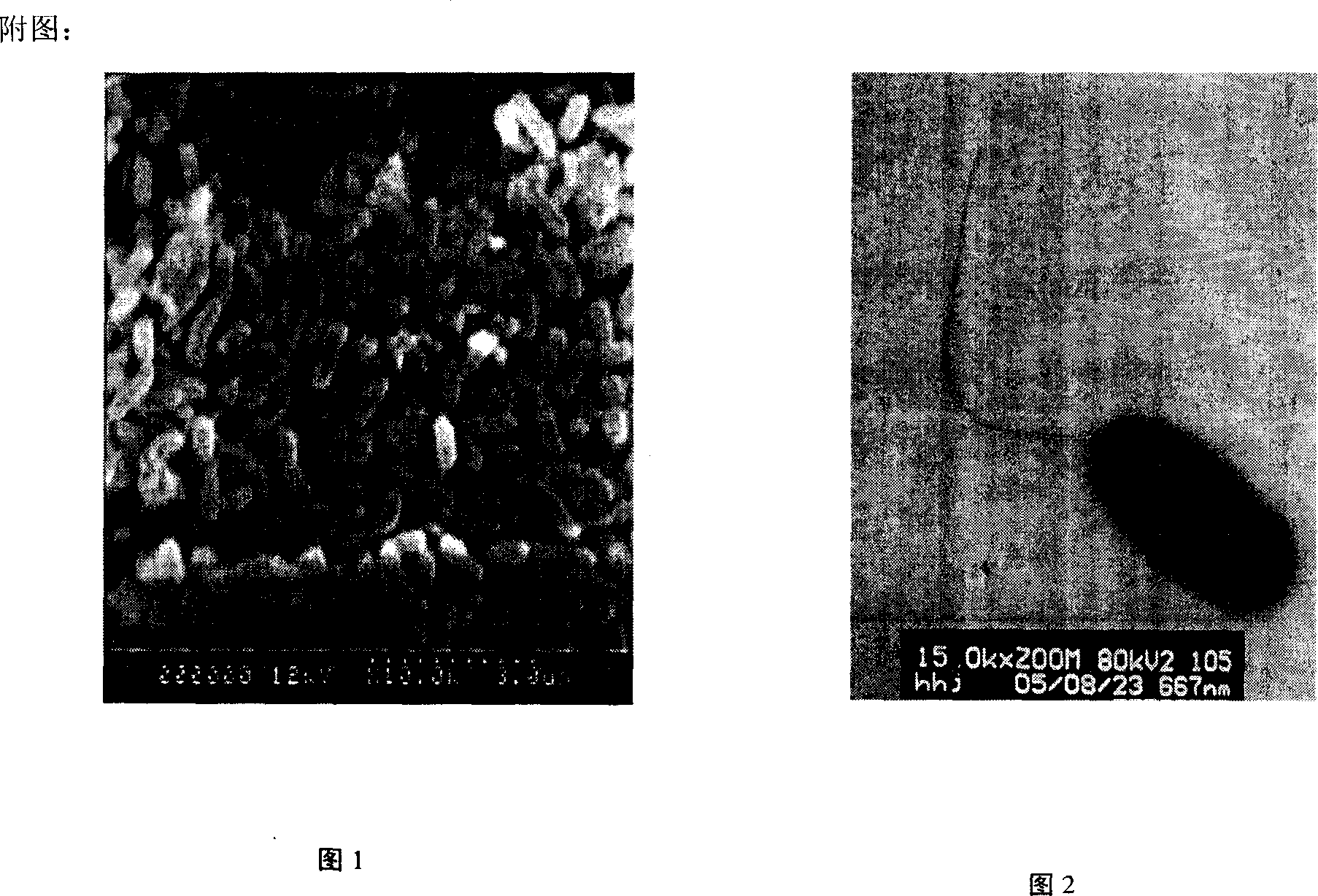Pseudomonas stutzeri JSD-008 and its degradation function for organophosphorus pesticide
A technology of Pseudomonas stutzeri and organophosphorus pesticides, applied in the field of chemical pesticide biodegradation, can solve the problems of chlorpyrifos degradation and discovery of related functions that have not been reported
- Summary
- Abstract
- Description
- Claims
- Application Information
AI Technical Summary
Problems solved by technology
Method used
Image
Examples
Embodiment 1
[0117] Embodiment 1: bacterial strain screening method
[0118] Acclimatization and cultivation of strains: take 5g of soil samples from pesticide-contaminated areas, inoculate them into a 50ml triangular flask with chlorpyrifos as the only carbon source or the only nitrogen source selective medium under aseptic conditions, add the original drug of chlorpyrifos, Make the final concentration 300mg / L, place in 30 ℃, 180rpm shaker culture, transfer according to 10% inoculum amount every 7 days, increase the concentration of chlorpyrifos each time by 200mg / L, until the chlorpyrifos in the culture medium The final concentration reaches 1100mg / L.
[0119] Isolation and purification of bacterial strains: Take the culture after acclimatization and culture, and serially dilute 10 -6 , 10 -7 , 10 -8 Spread on the plate of the selective medium (inorganic salt medium with chlorpyrifos as the only carbon source or inorganic salt medium with chlorpyrifos as the only nitrogen source) used...
Embodiment 2
[0120] Embodiment 2: bacterial strain is to the degradation efficiency of chlorpyrifos
[0121] Inoculate the isolated and purified bacterial strains on the selective medium used for isolation. After they grow vigorously, make a bacterial suspension and inoculate them in 50ml of inorganic salt medium containing 50mg / L chlorpyrifos. At the same time, set a blank for no inoculation As a control, cultured on a shaker (30° C., 180 rpm) for 5 days, extracted with dichloromethane, measured the content of chlorpyrifos in the culture solution by gas chromatography, and calculated the degradation rate of the strain to chlorpyrifos.
[0122] Degradation rate% = (residual pesticide amount in the system after cultivation / initial pesticide addition amount) × 100%
[0123] The results showed that the degradation rate of JSD008 strain to chlorpyrifos reached 85.7%, the degradation rate of the blank control cultured with chlorpyrifos as the only carbon source of inorganic salt was 15.6%, and ...
Embodiment 3
[0124] Embodiment 3: the 16S rDNA sequence determination of bacterial strain
[0125] Extraction of total DNA: Take 1.5ml of bacterial solution cultured overnight, centrifuge at 5000rpm for 2min, collect the precipitate; add 600ul 65℃ preheated cell lysate, mix well, add 1 / 10 volume of Tris saturated phenol, and keep warm at 65℃ Half an hour, and shake gently from time to time; add an equal volume of phenol / chloroform / isoamyl alcohol, mix well, centrifuge at 13000rpm, 10min; take the supernatant, add an equal volume of chloroform / isoamylalcohol and extract again, centrifuge, 13000rpm, 10min ; Take the supernatant, add 1 / 10 volume of 3M sodium acetate, add 0.6 volume of pre-cooled isopropanol, and place it at -70°C for 10 minutes; centrifuge at 10,000 rpm for 10 minutes, discard the supernatant, wash the precipitate with 70% ethanol, and dry it in vacuum; Add 200ul of deionized water to redissolve, add 20ul of 1mg / ul RNase, heat at 65°C for 30min; add water to 500ul, add an equ...
PUM
 Login to View More
Login to View More Abstract
Description
Claims
Application Information
 Login to View More
Login to View More - R&D
- Intellectual Property
- Life Sciences
- Materials
- Tech Scout
- Unparalleled Data Quality
- Higher Quality Content
- 60% Fewer Hallucinations
Browse by: Latest US Patents, China's latest patents, Technical Efficacy Thesaurus, Application Domain, Technology Topic, Popular Technical Reports.
© 2025 PatSnap. All rights reserved.Legal|Privacy policy|Modern Slavery Act Transparency Statement|Sitemap|About US| Contact US: help@patsnap.com

